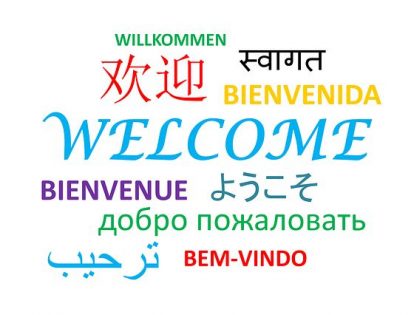Localization and translation have become very integral to content creation and product marketing. 56.2% of global customers believe that language is more important than price when it comes to making purchase decisions. Companies interested in reaching this massive market should consider going multilingual.
Today, you have specialised content writing companies who can help you translate your content to another language in no time. But going multi-lingual isn’t easy. There are numerous hurdles right from the lack of linguistic knowledge to high competition from native writers which can pose numerous challenges to companies.
So, should you go multilingual or not?
Advantages of going multilingual
- You’ll be able to reach a wider audience and a bigger customer base
Knowledge of a new language can help you reach more people from around the world. Once your audience base increases, you’ll have a much larger group to sell your products to. In fact, studies show that 72.4% of customers are more likely to buy a product/service which contains information in their language.
Here’s more proof – social media influencer Neil Patel’s website received 47% more traffic when he translated his website into 82 languages.
- You’ll find it much easier to recognise and meet changing global trends
If you know how to write in another language, chances are you’ll know how to read in that language too. This makes it very easy for multilanguage content marketers to learn about upcoming trends from around the world, even if the information isn’t available in English.
- You’ll have more opportunities for improved SEO
Many languages use loan words (think kindergarten, café, bungalow, chutney) in their writing. Using these words in your multilingual blog will bring your content in the search results of non-English speakers who may be searching for information in their native languages. Localised SEO also helps you get referrals and backlinks from websites in other languages.
Get your multilingual SEO right by reading this insightful article.
Image Credits: Pixabay
Disadvantages of going multilingual
- You’ll need to learn a new language
There’s no problem if you already know another language. However, if you’re a single-language speaker, then you’ll need to learn the new language first and then create content. This can take a lot of time.
- It involves twice the work and time
Once you have a multilingual blog, you’ll need to divide time to create content for each of your blogs. Google Translate won’t cut it all the time. You’ll need to spend time to proofread and edit your blogs.
- Your content may not be as good as the natives’
Mastery over language comes with practice. If you’re new to the language, your content may not be as powerful as it would be coming from a native. This type of low-quality content may lead customers to believe that your primary blog/website is of poor quality too.
- Direct translations aren’t available for all keywords
While multilingual SEO offers immense potential, some keywords just don’t have direct translations. You’ll need to use your language or English to represent these words, which can ruin the flow of your content and reduce its SEO value.
Factors to consider
Now that we know the pros and cons of going multilingual, let’s look at the factors which determine whether you should turn into a linguist with your blog/website or not:
- Your ability to support numerous languages
Reputed companies like Coca Cola, Audi, McDonald’s and IBM offer their websites in 33 languages in order to increase their reach and visibility. These companies experienced a 12.4% growth in revenues compared to companies which hosted lesser than 20 languages.
Companies should consider whether they have the expertise to support a large number of languages or not. If they can’t, they should select languages that are known to be very lucrative.
For example, French and German have over 270 million+ speakers. Over 34% of UK customers and 30% of US citizens speak Spanish, making it very lucrative. Other languages like Arabic, Hindi and Japanese are highly profitable given how Middle Eastern and Eastern countries are growing economies.
Image Credits: Pixabay
- Availability of budget-friendly translation services
While translation software are great for the occasional translation, you’ll need the services of a professional translation company for a multilingual website.
These days, you can even find certified and experienced content writers who can translate your content from English to a foreign language and back, sometimes at prices as low as $0.13 per word. Some companies even offer amazing discounts for content translation. These companies will also have stringent QA procedures in place, which will ensure a 100% quality.
You’ll need to check whether you have such translators near you, the type of services they offer and what they charge you for these services.
- Availability of plugins
Not all plugins are available on all hosting services. Even when they’re available, they may be really expensive. It’s important for writers/marketers to consider whether the plugins they need are present on the hosting site or not and the cost of acquiring these plugins by moving to another hosting company.
Plugins are especially important when you’re deciding which language to include in your list of supported languages. Not all plugins support all dialects and scripts. It’s important to consider this too when making a decision.
Some of the best multilingual plugins are – WPML, Weglot, TranslatePress, Polylang, Translate WordPress with GTranslate and Loco Translate.
Feature Image Credits: Pixabay
Author bio:
Nisha Prakash is a blogger specializing in social media marketing and content management. She is an avid runner and a bibliophile.


